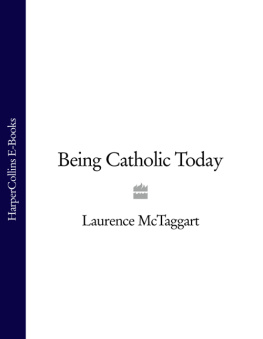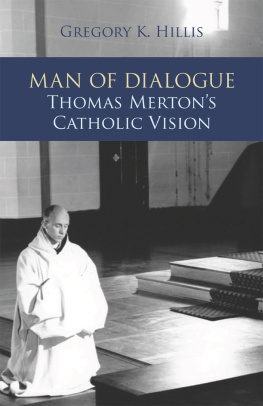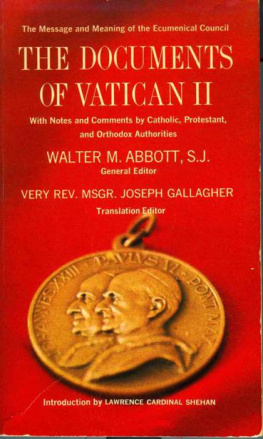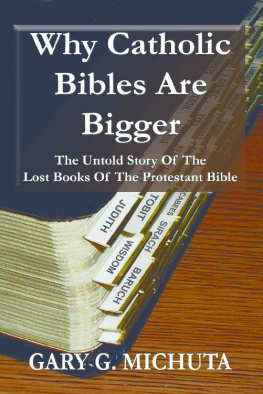Moyra Doorly - The Council in Question: A Dialogue With Catholic Traditionalism
Here you can read online Moyra Doorly - The Council in Question: A Dialogue With Catholic Traditionalism full text of the book (entire story) in english for free. Download pdf and epub, get meaning, cover and reviews about this ebook. year: 2013, publisher: TAN Books, genre: Religion. Description of the work, (preface) as well as reviews are available. Best literature library LitArk.com created for fans of good reading and offers a wide selection of genres:
Romance novel
Science fiction
Adventure
Detective
Science
History
Home and family
Prose
Art
Politics
Computer
Non-fiction
Religion
Business
Children
Humor
Choose a favorite category and find really read worthwhile books. Enjoy immersion in the world of imagination, feel the emotions of the characters or learn something new for yourself, make an fascinating discovery.

- Book:The Council in Question: A Dialogue With Catholic Traditionalism
- Author:
- Publisher:TAN Books
- Genre:
- Year:2013
- Rating:5 / 5
- Favourites:Add to favourites
- Your mark:
- 100
- 1
- 2
- 3
- 4
- 5
The Council in Question: A Dialogue With Catholic Traditionalism: summary, description and annotation
We offer to read an annotation, description, summary or preface (depends on what the author of the book "The Council in Question: A Dialogue With Catholic Traditionalism" wrote himself). If you haven't found the necessary information about the book — write in the comments, we will try to find it.
Moyra Doorly: author's other books
Who wrote The Council in Question: A Dialogue With Catholic Traditionalism? Find out the surname, the name of the author of the book and a list of all author's works by series.
The Council in Question: A Dialogue With Catholic Traditionalism — read online for free the complete book (whole text) full work
Below is the text of the book, divided by pages. System saving the place of the last page read, allows you to conveniently read the book "The Council in Question: A Dialogue With Catholic Traditionalism" online for free, without having to search again every time where you left off. Put a bookmark, and you can go to the page where you finished reading at any time.
Font size:
Interval:
Bookmark:

This edition originally published in England by Gracewing.
Copyright 2011 Moyra Doorly and Fr. Aidan Nichols, O.P.
Retypeset and published in 2013 by TAN Books, an Imprint of Saint Benedict Press, LLC, Charlotte, North Carolina, with Americanization of word spelling.
The rights of Moyra Doorly and Aidan Nichols, O.P. to be identified as the authors of this work have been asserted in accordance with the Copyright, Designs and Patents Act 1988.
All rights reserved. With the exception of short excerpts used in articles and critical review, no part of this work may be reproduced, transmitted, or stored in any form whatsoever, printed or electronic, without the prior written permission of the publisher.
Cover design by Milo Persic.
Front cover image: Second Vatican Council Convened in 196 3 (photo), St. Peters, Vatican City, The Bridgeman Art Library. Back cover image: Council of Bishops on Saint Peters Square, October 11, 1961, Wikimedia Commons.
Cataloging-in-Publication data on file with the Library of Congress.
ISBN 978-0-89555-268-6
Published in the United States by
TAN Books
An Imprint of Saint Benedict Press, LLC
P.O. Box 410487
Charlotte, NC 28241
www.tanbooks.com
Printed and bound in the United States of America.
C ONTENTS
F OREWORD
RECENTLY I have been reading Eamon Duffys Fires of Faith: Catholic England under Mary Tudor (2009) which recounts the heroic efforts of Queen Mary and Cardinal Reginald Pole, Archbishop of Canterbury, to replant the Catholic Faith in England and how they nearly succeeded. One cause of anguish as I read of the changing circumstances in this struggle was the officially endorsed burning of Protestants, often simpleminded heroes who could not be dissuaded. Both sides, Catholic and Protestant, believed it just and sometimes necessary to eliminate their opponents. St. Thomas More was responsible for a number of Protestant deaths.
All Christians today have radically different sensibilities from our sixteenth-century Christian brothers and sisters who were pro-burning. This is progress, a genuine and homogeneous doctrinal development which spells out better the consequences of the Gospel. Vatican II was correct to acknowledge the rights of persons not to be coerced by the State in their religious convictions.
Much more could be said about these facts, on human dignity, Christendom and the coercive powers of State and Church to remind us that learned dialogue has to be seen in wider theological and cultural perspectives. All Christians are nourished by the Scriptures and Catholics reverence the teachings of Popes and Councils, while the historical, political and public relations consequences of doctrinal and disciplinary developments have to be carefully consideredbetter than we have done recently.
The stimulating debate in this book is like a tennis match between Trent and Vatican II, between two players with strongly contrasting styles. Trent has a powerful and well-placed serve, the occasional devastating smash, and volleys efficiently at the net when she gets into position. Vatican II possesses only an ordinary serve, but plays a wide variety of strokes including topspin, and is fast and agile around the court. On some occasions Father Nichols had to work hard to keep the ball in play but he was regularly successful.
Without doubt the Catholic Church everywhere in the English-speaking world is now very different from the Church of the 1950s. The bigger changes came from outside pressures, e.g., the pill, and the consequent permissive revolution, the coarsening of standards in the new media, and hostile legislation. But many Catholic communities have been guilty also of self-harm, ignorantly encouraging the secularization of institutions. When the reforms of Vatican II were imposed, unexpected consequences followed, especially when leaders were nave and optimistic, underestimating the virulence of hostile forces and overestimating Catholic vitality and influence. The crux of the discussion is whether this self-harm came from illegitimate appeals to the spirit of Vatican II or can be sheeted home to doctrinal errors in the Council teachings.
We now have situations which are historically novel, indeed bizarre in a couple of opposite ways. Some still insist on calling themselves Catholic when they reject most of the Churchs teaching on life, marriage and sexuality and regard the Pope and Bishops as hindrances (or irrelevant) to their modernizing projects. We had one priest in Australia who generated considerable publicity before he left his parish because he rejected the Judeo-Christian concept of God as tribal and rejected the divinity of Christ who, he felt, might not have existed. For years he claimed to be Catholic.
On the other hand, with the Society of St. Pius X we have devout believers who accept the Tradition but face resolutely at the same time in different directions by separating themselves from the legitimate authority of Pope and the Council, while also speaking as though they were more Catholic than the Pope, prepared to write the creed with their own blood.
I fear that the term official Church increases the confusion. For years I have refused to use it, because there is no such thing as the official Church, especially if contrasted with local spontaneous communities. The one Catholic Church, the Orthodox churches and other ecclesial communities all have officials, but that is a different matter.
This fascinating exchange is a significant contribution to the official dialogue between Rome and Ecne but is of wider significance in searching out the nature of genuine continuity and development across the millennia in doctrine, liturgy, and church law; and in devising pastoral strategies for handing on the faith and for re-evangelization.
It is a lively reminder that none of us can take refuge in fundamentalisms, and deserves to be read widely.
 George Cardinal Pell Archbishop of Sydney
George Cardinal Pell Archbishop of Sydney
Feast of St. Vincent de Paul
27 September 2010

T HE M AKING OF A D EBATE : A V IEW FROM THE O FFICIAL C HURCH
THINKING ahead to his coming Council (Vatican II, 19621965), Pope John XXIII described it as devoted to the enlightenment, edification, and joy of the entire Christian people. At around the same time, the Archbishop of Milan, who would become, as Paul VI, the second (and last) pope of the Council, gave vent to his fear it would stir up a hornets nest. Both predictions were, up to a point, correct. The exchange of letters in this book bears witness to that.
What, we may ask, was the aim, initially, of the Second Vatican Council? The answer is not easy to give because John XXIIIwhose personal brainchild it wasgave rather conflicting signals about the contents of his own mind. But we should not go far wrong if we included in our answer a trio of goals. They were: giving inspiration for the Churchs witness to the contemporary world; providing an impetus to the reunion of Christians; recovering more fully some ancient features of the Tradition (a more rounded reading of the Bible, knowledge of the Fathers, and early Christian spiritualityincluding liturgical spiritualitywould have figured among the features concerned). It is likely that the Pope expected the Council, to some degree, to define itself. When, by its documents, it did so, it became apparent that the first and the third of the goals just suggested, soon to be dubbed, in a borrowing from, respectively, Italian aggiornamento or bringing up to dateand French ressourcement or going back to the sourcesdid indeed describe what the Councils overall presentation of Catholicism was meant to achieve.
Next pageFont size:
Interval:
Bookmark:
Similar books «The Council in Question: A Dialogue With Catholic Traditionalism»
Look at similar books to The Council in Question: A Dialogue With Catholic Traditionalism. We have selected literature similar in name and meaning in the hope of providing readers with more options to find new, interesting, not yet read works.
Discussion, reviews of the book The Council in Question: A Dialogue With Catholic Traditionalism and just readers' own opinions. Leave your comments, write what you think about the work, its meaning or the main characters. Specify what exactly you liked and what you didn't like, and why you think so.







